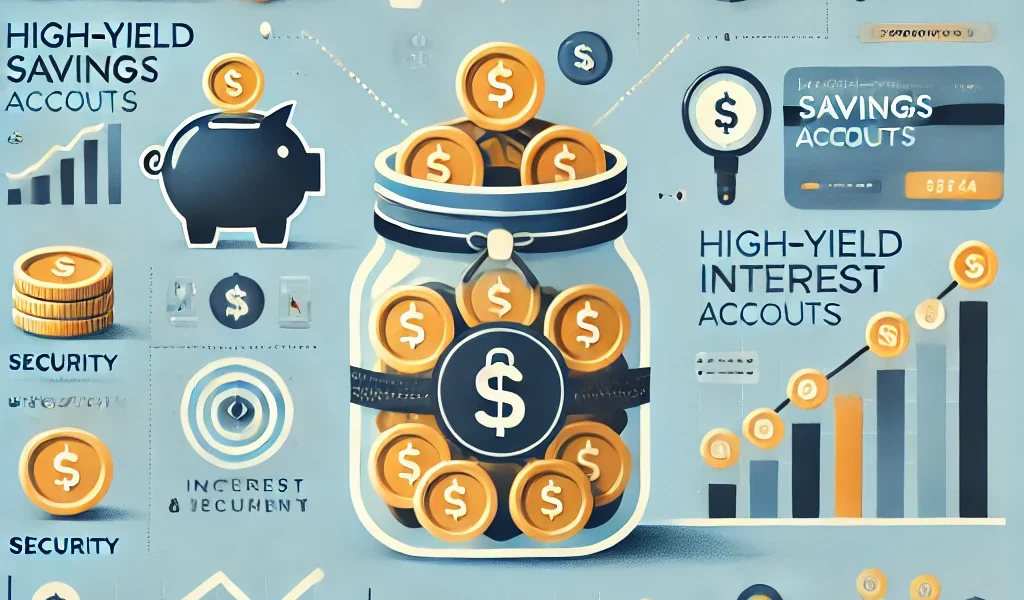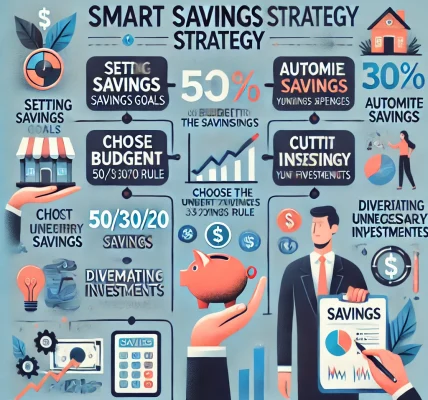Saving money is an essential part of financial planning, and choosing the right savings account can make a significant difference in how your money grows. High-yield savings accounts (HYSA) offer higher interest rates than traditional savings accounts, making them an attractive option for those looking to maximize their savings. But are they really worth it? In this guide, we will explore the pros and cons of high-yield savings accounts, compare them to other savings options, and help you determine if they are the right choice for your financial goals.
What Is a High-Yield Savings Account?
A high-yield savings account is a type of savings account that offers a higher interest rate compared to standard savings accounts. These accounts are typically offered by online banks, credit unions, and some traditional banks. The interest rates on HYSAs can vary, but they are generally much higher than the national average for traditional savings accounts.
Key Features of High-Yield Savings Accounts:
- Higher Interest Rates: Can range from 2% to 5% APY, compared to the 0.01% to 0.10% APY found in traditional savings accounts.
- Liquidity: Allows easy access to funds, though some banks may have withdrawal limits.
- Low Risk: Deposits are typically insured by the FDIC (up to $250,000 per depositor) or the NCUA for credit unions.
- Minimal Fees: Many online banks offer HYSAs with no monthly maintenance fees.
Pros of High-Yield Savings Accounts
1. Higher Interest Rates
The primary benefit of an HYSA is its competitive interest rates. This allows your money to grow faster compared to a traditional savings account, helping you keep up with inflation.
2. Security & Low Risk
HYSAs are insured by government agencies like the FDIC or NCUA, ensuring that your money is protected up to a certain limit. This makes them a safe investment option with no risk of losing your principal.
3. Liquidity & Flexibility
Unlike certificates of deposit (CDs) or long-term investments, HYSAs offer easy access to your funds. Most accounts allow unlimited deposits and a reasonable number of withdrawals per month, making them ideal for emergency funds and short-term savings goals.
4. No or Low Fees
Many online banks offer HYSAs with no monthly maintenance fees, low minimum balance requirements, and no hidden charges, making them a cost-effective savings option.
5. Perfect for Short-Term Goals
If you’re saving for a vacation, emergency fund, or a down payment, an HYSA provides a secure place to store your funds while earning interest.
Cons of High-Yield Savings Accounts
1. Interest Rates Can Fluctuate
Unlike fixed-rate investments, HYSA interest rates are variable, meaning they can decrease over time if the Federal Reserve adjusts interest rates.
2. Limited Transactions
Some banks impose a withdrawal limit (typically six per month) due to federal regulations, which might be inconvenient for those who need frequent access to their savings.
3. Inflation Impact
While HYSAs offer better rates than traditional savings accounts, they may not always keep up with inflation, meaning your money could lose purchasing power over time.
4. May Require an Online Bank
Most of the best HYSA rates are offered by online-only banks, which means you won’t have access to physical branches. Some people may prefer in-person banking services.
Comparing HYSAs to Other Savings Options
| Feature | High-Yield Savings Account | Traditional Savings Account | Certificate of Deposit (CD) | Money Market Account |
|---|---|---|---|---|
| Interest Rate | High (2-5% APY) | Low (0.01%-0.10% APY) | Fixed, higher than HYSA | Moderate |
| Liquidity | High | High | Low (fixed term) | Moderate |
| Risk Level | Low | Low | Low | Low |
| FDIC/NCUA Insured | Yes | Yes | Yes | Yes |
| Withdrawal Limits | Yes (typically 6 per month) | Yes | No (but penalties apply) | Yes |
Are High-Yield Savings Accounts Worth It?
A high-yield savings account is a great option if you want a secure, liquid, and interest-earning place to store your money. However, whether or not it’s worth it depends on your financial goals.
When an HYSA Is a Good Choice:
✅ You want higher interest rates without locking your money away. ✅ You need quick access to your funds for emergencies or short-term savings. ✅ You prefer low-risk investment options with FDIC or NCUA insurance.
When an HYSA May Not Be Ideal:
❌ You are saving for a long-term goal and want higher returns (consider stocks, ETFs, or mutual funds). ❌ You need frequent access to your money without withdrawal limits. ❌ You prefer a fixed rate of return (consider CDs or bonds instead).
How to Choose the Right High-Yield Savings Account
If you decide that an HYSA is right for you, consider these factors before opening an account:
🔹 Interest Rate: Compare APYs across different banks. 🔹 Fees: Look for accounts with no maintenance fees or minimum balance requirements. 🔹 Withdrawal Limits: Ensure it offers enough access to funds based on your needs. 🔹 Reputation & Security: Choose an FDIC- or NCUA-insured institution. 🔹 Customer Service: Read reviews to check responsiveness and ease of use.
Conclusion
High-yield savings accounts are one of the best short-term saving options available today. They provide higher interest rates, liquidity, and security with little to no risk. However, they are not a replacement for long-term investment strategies that offer higher potential returns.


